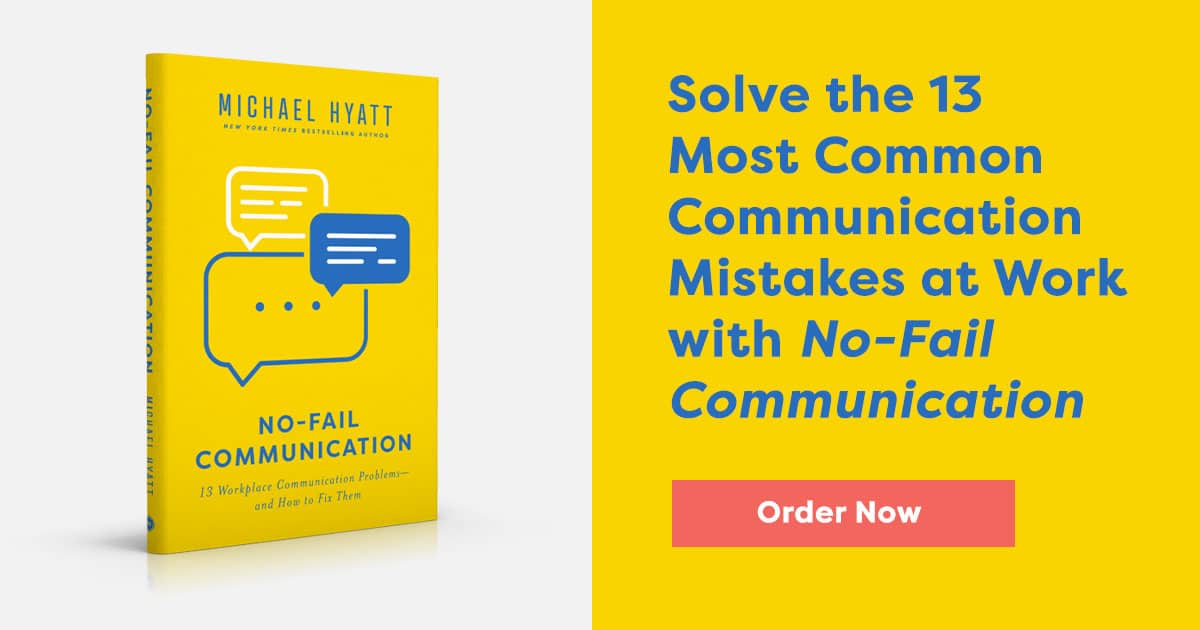In 2000, I got one of the greatest opportunities in my career. I was appointed publisher over the Nelson Books division of Thomas Nelson Publishers, which was one of the top English language publishers in the world. I knew our team had experienced some financial troubles, but I was thrilled for the chance to lead.
Then I saw the profit-and-loss statement. Ouch! We were the least profitable division in the company. There had been little or no revenue growth for three years straight, and we had actually lost money the prior year. Everyone was tense. Nobody understood what was happening.
I was still excited about the opportunity but wondered, “How come nobody told me what was really going on?”
A company that withholds information from employees is like a house built on a floodplain—a disaster waiting to happen. This is especially true when the company is not doing well or major changes are afoot. Rumors begin to circulate. Morale plummets and tension rises. It’s a perfect environment for mistrust, suspicion, or even panic.
Fortunately, I was able to rally the Nelson Books team and lead a turnaround. Part of that involved letting my whole team know the truth about our financial situation.
That experience convinced me of the need to share as much information with others as I could—when introducing a major change or any bad news. That decision has paid off over and over again in greater trust, increased morale, and higher productivity.
You can do this too with Cascading Communication, a technique I detail in my book No-Fail Communication: 13 Workplace Communication Problems and How to Fix Them. Here are the basics.
Decide What to Communicate
Deciding how much to share with your team is more art than science, but as a general rule, default to transparency. Of course, transparency doesn’t extend to breaching ethics or breaking the law. Your aim is to ensure that people who need to know do know.
Remember, secrecy breeds suspicion. Transparency builds trust.
Get the Message Right
Once you’ve decided what to communicate, you need to craft the message. This is especially true when cascading communication involves a significant announcement or change.
I like to begin by writing down my thoughts, even if I plan to deliver them orally. That gives me greater clarity about the message. And when you communicate, in person or in writing, get straight to the point. State your primary reasons for the decision, and make them clear and simple.
Determine Who Needs to Know, and in What Order
Cascading communication begins with the people who should be informed first and flows from there. Generally, the information will cascade through levels of management, but there are exceptions. Leaders should never be surprised in public by an announcement that affects their purview. They deserve to hear the news ahead of their team. Also, an employee should never be blindsided by news about their change in status or responsibility in a public meeting. They should be informed ahead of their coworkers.
Clarify as Needed
Expect that your cascade of information will raise questions. That’s normal. Most questions conceal no hostile intent. People just want clarity. So don’t be afraid to build in a mechanism for questions and feedback. Listen non-defensively. Make eye contact. Affirm the questioner. And clarify as needed.
Imagine the boost to morale in your company if every person affected by company news was informed promptly and intentionally. How would it increase the commitment of team members to know that they were trusted and included? What would it do for the trust and respect given to leaders? Secrecy breeds suspicion. Transparency builds trust. And everyone plays better when they know the score.
For a deeper dive on this subject, plus a dozen other workplace communication problems, get a copy of my book No-Fail Communication: 13 Workplace Communication Problems and How to Fix Them.
Disclosure of Material Connection: Some of the links in the post above are “affiliate links.” This means if you click on the link and purchase the item, we will receive an affiliate commission. Regardless, we only recommend products or services we use and believe will add value to our readers. We are disclosing this in accordance with the Federal Trade Commission’s 16 CFR, Part 255: “Guides Concerning the Use of Endorsements and Testimonials in Advertising.










